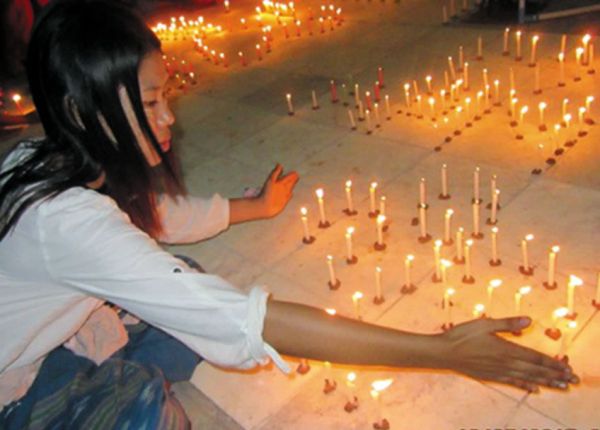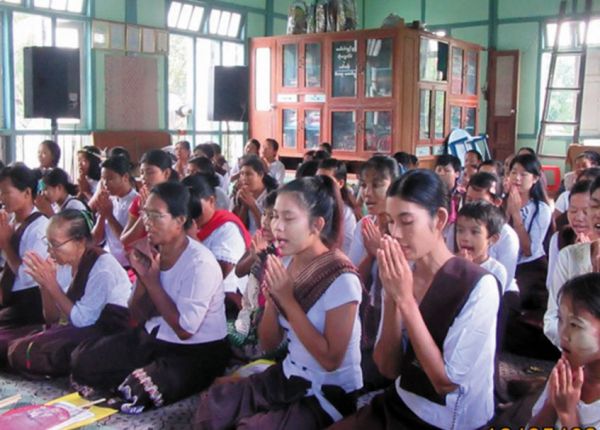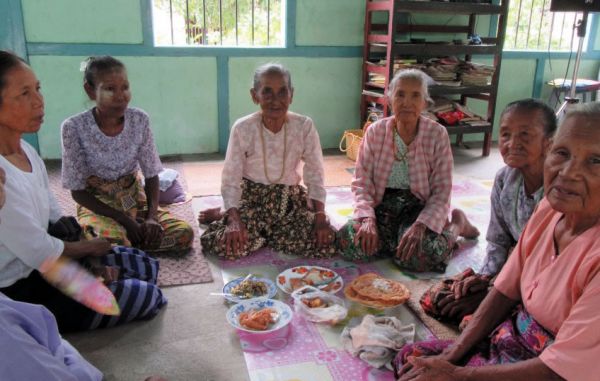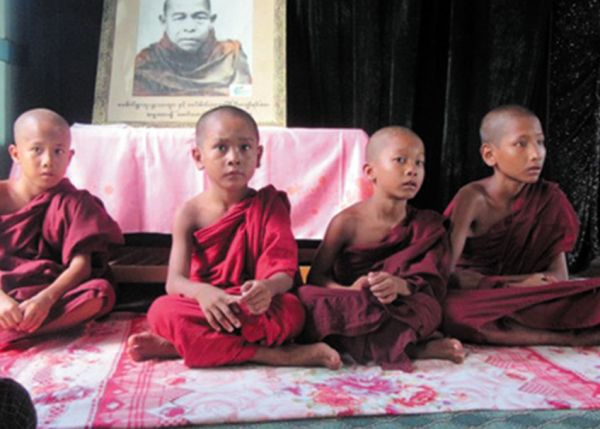
Reflecting the True Light
The last time I crossed a body of water on a boat at night was on my first mission assignment in the Fiji Islands. On one night I had to return to the mainland of Vanua Levu from Rabi Island. I told the priest maybe I could return to the mainland the next morning. The priest, sensing my hesitation said, "This is part of missionary life." I saw a little smile on his face. And so I obliged. But this time, we had to cross a river in the dark. Swhebo, my friend, told me about crossing a river, but I thought it would be the next morning. I placed my bag and went into what I thought would be the safest part of the boat. I looked around. No life jackets?! I panicked.

For no reason, I looked up and there I saw the bright stars shining. The stars over here seemed to shine brighter without the city lights above. And then I saw on the other side – on top of a hill a lone pagoda standing and glowing in the dark like a lighthouse guiding our boat to shore. It took away my anxiety until we reached the monastery on the other side. Then Shwebo directed me to my room, which turns out to be the room next to the head monk. I settled in the room and after a few minutes dozed off quite tired after about four hours of travel on a minibus.
I woke up to a monastery buzzing with activities. People were coming and going, mostly women bringing their offering of rice, peanuts, bananas and sweets. It was a Friday, and they refer to it as their Sabbath day. I got curious. The monk explained to me that during this day people observe fasting and make the effort to follow the five precepts or even the eight precepts. This is one of the days when lay Buddhists practice more consciously and intensely the teachings of Buddha and meditate for longer periods of time. It is the day to cleanse the mind. It is known as Uposatha, the Buddhist day of observance.
The day before this I went out with the members of the committee who were mostly older men of the village. "Where are we going?" I asked U Gyi Win. He introduced me to the group of men. He replied that we were going to visit every home and ask for donations for the activity tomorrow.
Thadingyut, which is the seventh month in the Burmese lunar calendar, falls on the month of October. During this month a number of festivals is observed in different parts of Myanmar. On full moon day, around six in the evening the people gathered in the monastery. They started distributing candles and clay. Then we walked uphill towards the pagoda. This time I went with the sisters of the head monk. They introduced me to the tradition of lighting candles during this night. It is believed that the light of the candles guides the Buddha upon his return from the heavens to the Earth. The Buddha went to the heavens and preached to the heavenly entities including his mother, Maya. There he preached the Abhidhamma – his teachings.
Once we reached the pagoda, people started to position themselves in the best places and started laying down their candles. I went to one spot and was told to spell out my name using the candles. Then when the signal was given everyone lit their candles. The whole pagoda complex shown bright with the lit candles. And they told me, "Don't let your candles to be blown out by the wind or your wish won't come true!" I guarded my candles seriously.

The chanting that followed was mesmerizing. And when I looked up again this time I saw the full moon. It was a joyful moment. Everyone was in festive mood. The firecrackers started exploding. Across the river, another pagoda was glowing. I walked around the pagoda. There were families praying before the image of Buddha. Children running around and young couples lighting their candles shaped into images of the heart.
Buddhism started with the Buddha. The word "Buddha" is a title, which means "one who is awake" in the sense of having "woken up to reality." The Buddha was born as Siddhartha Gautama in Nepal around 2,500 years ago. He did not claim to be a god or a prophet. He was a human being who became enlightened, understanding life in the deepest way possible.
In the Christian tradition, light is an important symbol or metaphor. In the Creed we speak of Jesus Christ as "Light from Light." In the Gospel of John, Christ is repeatedly mentioned as the one bringing true light to the world: "I am the light of the world. He who follows me does not walk in darkness, but will have the light of life" (8:12); "While you have the light, believe in the light, that you may become sons of light" (12:36). As children of light, we are lights ourselves. But lights with small letter l's. We must not forget that we are not the source of this light. Just like the moon, we merely reflect the True Light.
In 2014, at the Final Mass for the sixth Asian Youth Day held in South Korea, Pope Francis told the young people to wake up and not to be afraid to bring faith to the society: "Wake up! Don't sleep, wake up! Young people of Asia, you are the heirs of a great testimony, a precious witness to Christ. He is the light of the world; He is the light of our lives! … You have a right and a duty to take full part in the life of your societies. Do not be afraid to bring the wisdom of faith to every aspect of social life! It is the duty to be vigilant, not to allow the pressures, the temptations and the sins of ourselves or others to dull our sensitivity to the beauty of holiness, to the joy of the Gospel. No one who sleeps can sing, dance or rejoice." A Christian who sleeps can never sing, dance or rejoice!
Myanmar is a country of diversity: religions, traditions, languages, cultures and color. It is waking up to this beautiful reality. Let us light our candles to shed light to the darkness of intolerance, exclusivity, fear and misunderstanding in the world today.
Wake up! Do not sleep!
Fr. Kurt Zion Pala lives and works in Myanmar.










 The Columbans are a society of missionaries, including priests and lay people, who minister to people of various cultures as a way of witnessing to the universal love of God.
The Columbans are a society of missionaries, including priests and lay people, who minister to people of various cultures as a way of witnessing to the universal love of God.